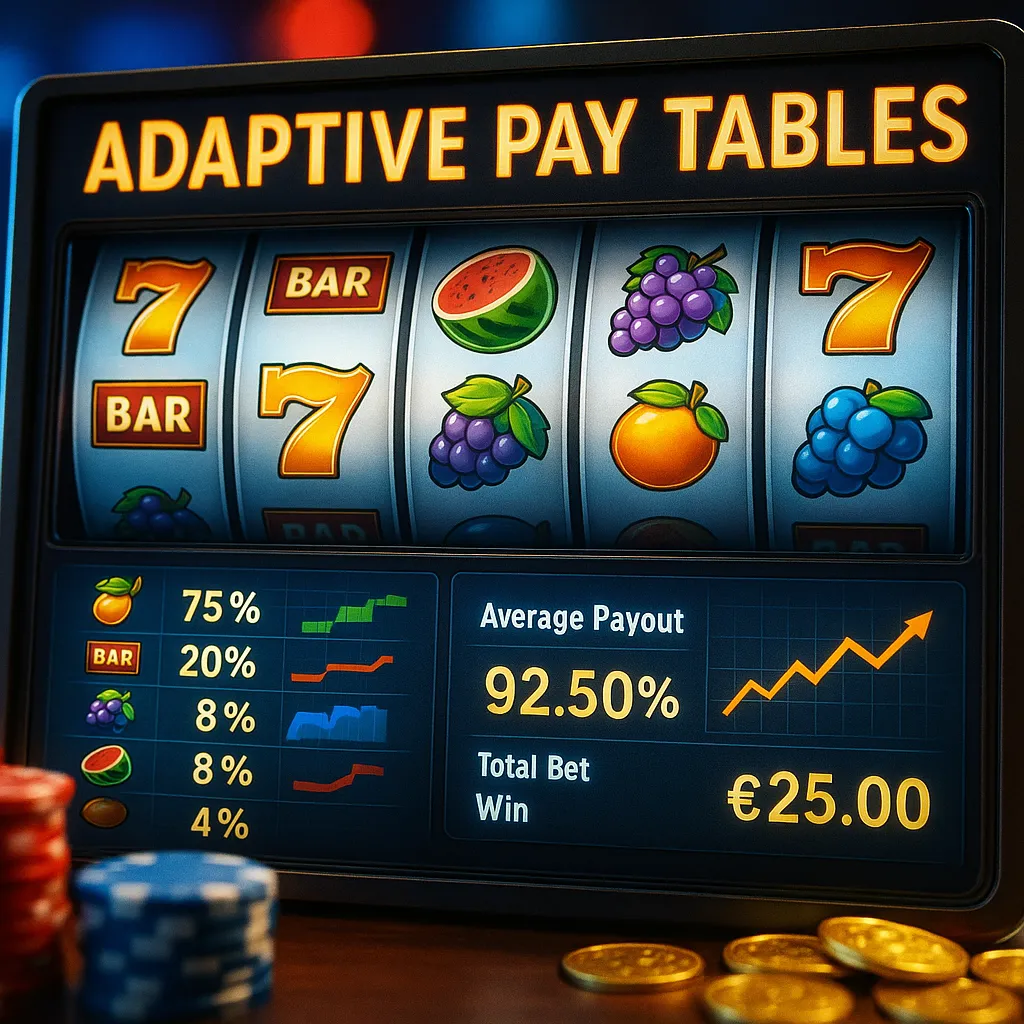When I first encountered an adaptive pay table, I’ll admit, I was skeptical. Having tested dozens of slot games over the years, from classic three-reel machines to the most cutting-edge video slots, the idea that a pay table could adjust itself in real time felt almost too good to be true. But after delving into the technology behind it and seeing live demonstrations in both online casinos and software developer sandboxes, I’m convinced that adaptive pay tables represent one of the most exciting evolutions in game design today.
Understanding the Basics of Pay Tables
Every slot game starts with a pay table—a chart that shows how much each symbol combination pays for a given bet. Traditionally, developers set these values based on statistical models and target Return to Player (RTP) percentages. Once a game launches, the pay table stays fixed, and players learn the potential payouts through game info screens or printed guides. While this method has served the industry well, it lacks flexibility.
Why Adaptivity Matters
Adaptive pay tables change in response to player behavior, time of day, or even broader market conditions. Imagine a digital slot that recognizes a lull in player activity on a Tuesday afternoon and bumps up certain symbol payouts to encourage engagement. As evening peaks approach, the game might gradually revert to its standard configuration to maintain house edge targets. This dynamic adjustment offers benefits to operators and potential thrills to players, creating a more personalized experience.
In a similar vein, many punters are always on the lookout for attractive betting welcome offers. Casinos and sportsbooks fine-tune these promotions based on new user sign-ups, play patterns, or competitor promotions, ensuring players feel rewarded and motivated to return. Adaptive pay tables apply the same principle directly at the core of slot gameplay.
The Technology Behind Adaptive Pay Tables
Real-Time Analytics and AI
At the heart of adaptivity is robust analytics. Modern casinos and game studios stream gameplay data—spin frequencies, bet sizes, win amounts—to real-time analytics engines. Machine learning models then detect patterns: perhaps a particular symbol combination is underperforming, or bet sizes are trending higher than expected. Based on predefined triggers, the system tweaks pay values within allowed regulatory ranges.
Regulatory Safeguards
Adaptive systems must still adhere to licensing rules. Regulatory bodies typically require that any pay table adjustments stay within an approved RTP band—say, between 92% and 96%. Before deployment, adaptive rulesets undergo rigorous testing and certification. That way, while the pay tables can flex, they never exceed the boundaries that protect both player fairness and operator sustainability.
Practical Player Benefits
Personalized Gameplay
Consider my own experience last weekend. I joined an online casino for a casual spin session and noticed a new slot offering an unexpectedly generous payout on “scatter” symbols. At first, I thought it was a promotional glitch. But after a few rounds, I realized the game was subtly rewarding scatter hits more often—likely to kickstart engagement for new or low-volume players like me.
Time-Based Incentives
Operators can schedule adaptive boosts during off-peak hours. For example, a Friday morning session might see wild symbol values increase by 10% to draw in early birds. As more players flood in later, the system gradually tapers back to baseline. This ebb-and-flow keeps the entire player base engaged, offering occasional surprises that feel genuinely rewarding.
Operator Advantages
Enhanced Retention
Traditional slots rely on periodic bonus rounds or loyalty programs to keep players invested. Adaptive pay tables add another retention tool directly in the gameplay mechanics. A well-timed payout bump can reignite interest in a game that might otherwise see diminishing returns during certain hours or demographic segments.
Data-Driven Optimization
Adaptive systems generate vast amounts of granular data. Operators can analyze how different tweaks impact player behavior, average bet sizes, and revenue per spin. Over time, this iterative feedback loop helps fine-tune not only the pay tables but also marketing strategies, bonus structures, and even game themes.
Real-World Example: Behind the Scenes
I had the opportunity to tour a major online casino’s control room, where a team of data scientists monitors live adaptive configurations across hundreds of titles. In one dashboard, they watch an “engagement index” that measures changes in session length whenever pay tables shift. One recent test increased high-tier symbol payouts by 5% during lunch hours. The result? Session durations rose by 12%, with only a 1.5% change in overall RTP—well within regulated limits.
Balancing House Edge and Player Delight
Adaptive mechanics are not about simply giving away money. They’re about fine-tuning. By carefully monitoring RMS—revenue per thousand spins—and player satisfaction metrics, operators ensure that any pay table flex delivers excitement without undermining profitability. In essence, adaptive pay tables align house edge targets with dynamic market demand.
Common Misconceptions
“Does adaptivity mean no stability?”
Not at all. Adaptive changes occur within tight parameters. Players still experience consistent gameplay rules. The tweaks are subtle enough that they feel like part of the game’s natural variance, rather than radical overnight changes.
“Can I detect when a table adapts?”
Sometimes. Seasoned players might notice slight shifts in hit frequency or symbol values. But these adjustments are usually small and gradual. Casinos design them to feel like an occasional lucky streak, not a wholesale redesign of the game.
Future Developments: What’s Next?
As artificial intelligence and cloud technologies evolve, adaptive systems will become more sophisticated. We may soon see pay tables that learn individual player preferences—rewarding risk-takers with higher volatility sessions, or offering low-risk players more frequent small wins. Integration with mobile notifications and loyalty platforms could trigger personalized pay table boosts linked to individual milestones, such as birthdays or deposit anniversaries.
Conclusion
Adaptive pay tables mark a significant leap forward in slot technology. By leveraging real-time analytics, machine learning, and regulatory frameworks, operators can create dynamic, engaging experiences that keep players excited while preserving industry sustainability. Whether you’re a casual spinner or a high-roller, you’ll likely encounter these adaptive mechanics soon, and when you do, you’ll understand that every small tweak is designed to make your game sessions more personalized and rewarding.




